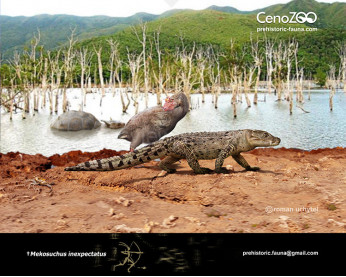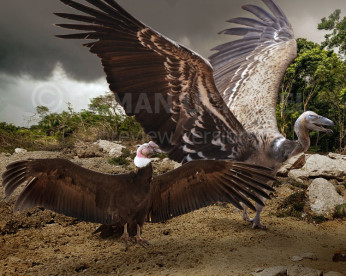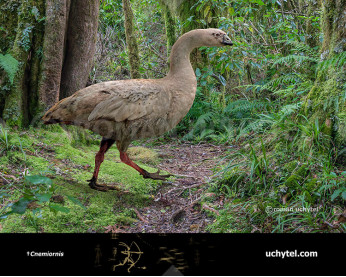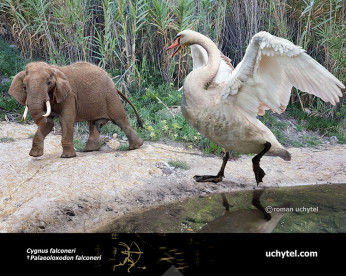Sylviornis
1000000011810000000118
Sylviornis (†Sylviornis neocaledoniae (Poplin, 1980))
Class: Aves
Order: †Sylviornithidae
Time period: Extinct in the Holocene (The bird was endemic to New Caledonia and Île des Pins)
Size: more than 80 cm in height, ~25–40 kg of weight
Sylviornis was a big flightless bird, standing up to 1.2–1.4 m tall, and weighing around 40 kg on average. In the 2016 study, its height in resting stance was estimated up to 0.8 m, while its mass estimate decreased to 27–34 kg. It is the most massive galliform known to have ever existed. It had a large skull with a high and laterally compressed beak surmounted by a bony knob. Its legs were rather short, but had strong toes with long nails. The skeleton has a number of peculiarities and differences that make Sylviornis stand apart from all other known birds: the clavicles were not fused to a furcula, the number of caudal vertebrae was very high, and the ribcage and pelvis were almost dinosaurian in appearance. The wings were reduced to small stubs. Little can be said about the lifestyle of Sylviornis. It was probably a slow-moving browser, and the structure of the bill and feet suggest that roots and tubers it dug up formed a major part of its diet.
Sylviornis is considered to constitute one of two genera in the extinct family Sylviornithidae, alongside Megavitiornis from Fiji, which are related to the Galliformes, the group containing the turkeys, chickens, quails and pheasants. It was likely hunted to extinction shortly after the first human arrival to New Caledonia around 1500 BC.
Predation by feral dogs and pigs probably also played a part.
Payment
You may use multiple payment methods to buy image such as credit cards, PayPal and bank transfer.
Sylviornis (†Sylviornis neocaledoniae (Poplin, 1980))
Class: Aves
Order: †Sylviornithidae
Time period: Extinct in the Holocene (The bird was endemic to New Caledonia and Île des Pins)
Size: more than 80 cm in height, ~25–40 kg of weight
Sylviornis was a big flightless bird, standing up to 1.2–1.4 m tall, and weighing around 40 kg on average. In the 2016 study, its height in resting stance was estimated up to 0.8 m, while its mass estimate decreased to 27–34 kg. It is the most massive galliform known to have ever existed. It had a large skull with a high and laterally compressed beak surmounted by a bony knob. Its legs were rather short, but had strong toes with long nails. The skeleton has a number of peculiarities and differences that make Sylviornis stand apart from all other known birds: the clavicles were not fused to a furcula, the number of caudal vertebrae was very high, and the ribcage and pelvis were almost dinosaurian in appearance. The wings were reduced to small stubs. Little can be said about the lifestyle of Sylviornis. It was probably a slow-moving browser, and the structure of the bill and feet suggest that roots and tubers it dug up formed a major part of its diet.
Sylviornis is considered to constitute one of two genera in the extinct family Sylviornithidae, alongside Megavitiornis from Fiji, which are related to the Galliformes, the group containing the turkeys, chickens, quails and pheasants. It was likely hunted to extinction shortly after the first human arrival to New Caledonia around 1500 BC.
Predation by feral dogs and pigs probably also played a part.

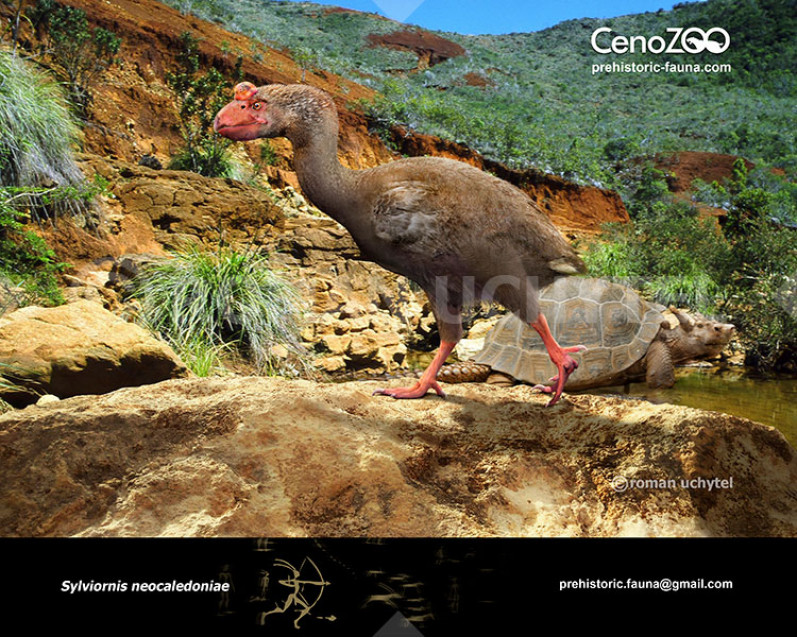
-797x638.jpg)
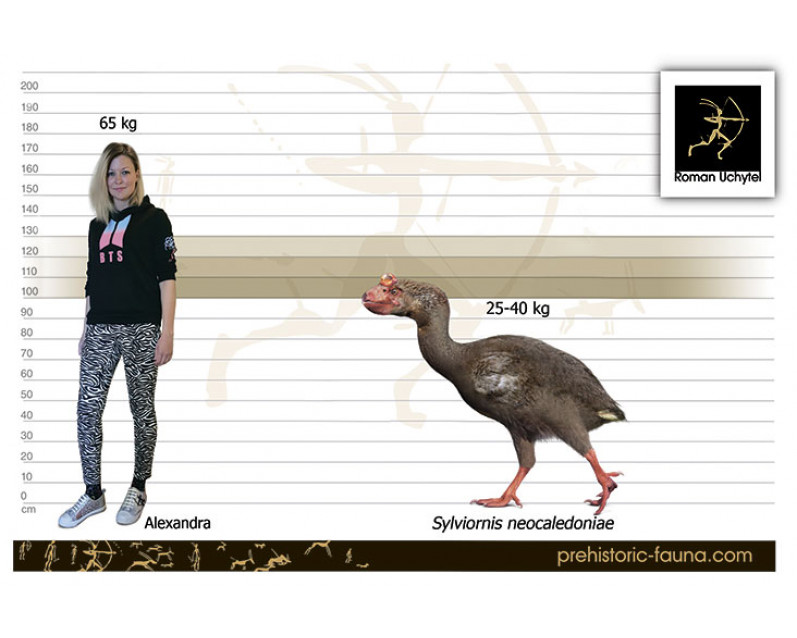

-70x56.jpg)

1-346x277.jpg)
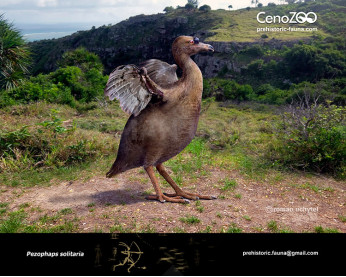
-346x277.jpg)
